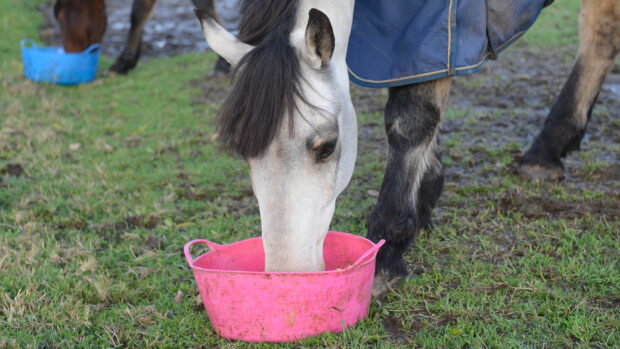It is helpful to know the exact bodyweight of your horse so you can monitor and notice any significant fluctuations in their weight. This knowledge can also prove beneficial when working out feed calculations, wormer or medication dosages, or even how much weight your horsebox is carrying. But how much does a horse weigh?
While guidelines for a horse’s weight in relation to his height are available, it should always be remembered that how much a horse weighs is individual and will depend on a number of factors including breed, bone density and muscle development.
A 13.2hh pony typically weighs between 300-350kg, but a fine show pony will weigh considerably less than a Welsh section C of the same height. Similarly, a 16.2hh horse is estimated to weigh between 580-650kg – a thoroughbred of that height would be at the lower part of that scale while a 16.2hh Irish draught would be at the top end.
“It’s not really practical to give an ‘ideal’ bodyweight to aim for. Body condition scoring, using visual and hands-on assessment, is preferable when evaluating whether a horse is overweight, underweight or just right,” explains Katie Grimwood, equine nutritionist at Baileys Horse Feeds.
Body condition scoring involves dividing the horse into three areas – the neck and shoulders, the body and the hindquarters and then looking at and feeling those areas and grading them on a scale of 0-5 depending on how much fat they are carrying. A score of zero would indicate that the horse is emaciated while a mark of five would suggest they are overweight. A healthy fat covering score is 2.5-3.
“Body condition scoring should become an essential part of any feeding programme and is often more use than knowing what a horse’s actual weight is, as it specifically looks at body fat coverage,” says Lizzie Drury, senior nutritionist at Saracen Horse Feeds.
“BCS gives us an indication of energy intake and expenditure and people should feel confident to ask for help and learn how to do it properly, as it is as equally important to help prevent obesity but also for optimum performance and recovery in performance horses.”
Article continues below…
You might also be interested in:

Subscribe to Horse & Hound magazine today – and enjoy unlimited website access all year round
Body condition scoring and weighing your horse should be done weekly, at the same time and by the same person to ensure consistency. The results should then be recorded so the figures can be monitored. Some equine nutritionists and vet surgeries can provide mobile weighbridges to allow owners to weigh their horses at home.
“Finding out the weight of your horse can be done in two main ways, using an equine weighbridge or a weigh tape. A weighbridge is the most accurate method; however they are expensive and most horse owners will not have access to one. Using a weigh tape is easier and is quicker to perform,” says Clare Barfoot, marketing and research development director at Spillers.
If using a weigh tape you should use the same one each time and ensure the horse is stood on a flat surface when the measurement is taken. The weigh tape should be measured around where a surcingle would lie.
“As equine professionals, we need to be working closely with horse owners to use bodyweight and body condition scoring to become part of their regular management routines. This will help owners to begin to understand the real health implications of optimum feed management,” concludes Lizzie.
Horse & Hound magazine, out every Thursday, is packed with all the latest news and reports, as well as interviews, specials, nostalgia, vet and training advice. Find how you can enjoy the magazine delivered to your door every week, plus options to upgrade to access our H&H Plus online service which brings you breaking news as it happens as well as other benefits.




